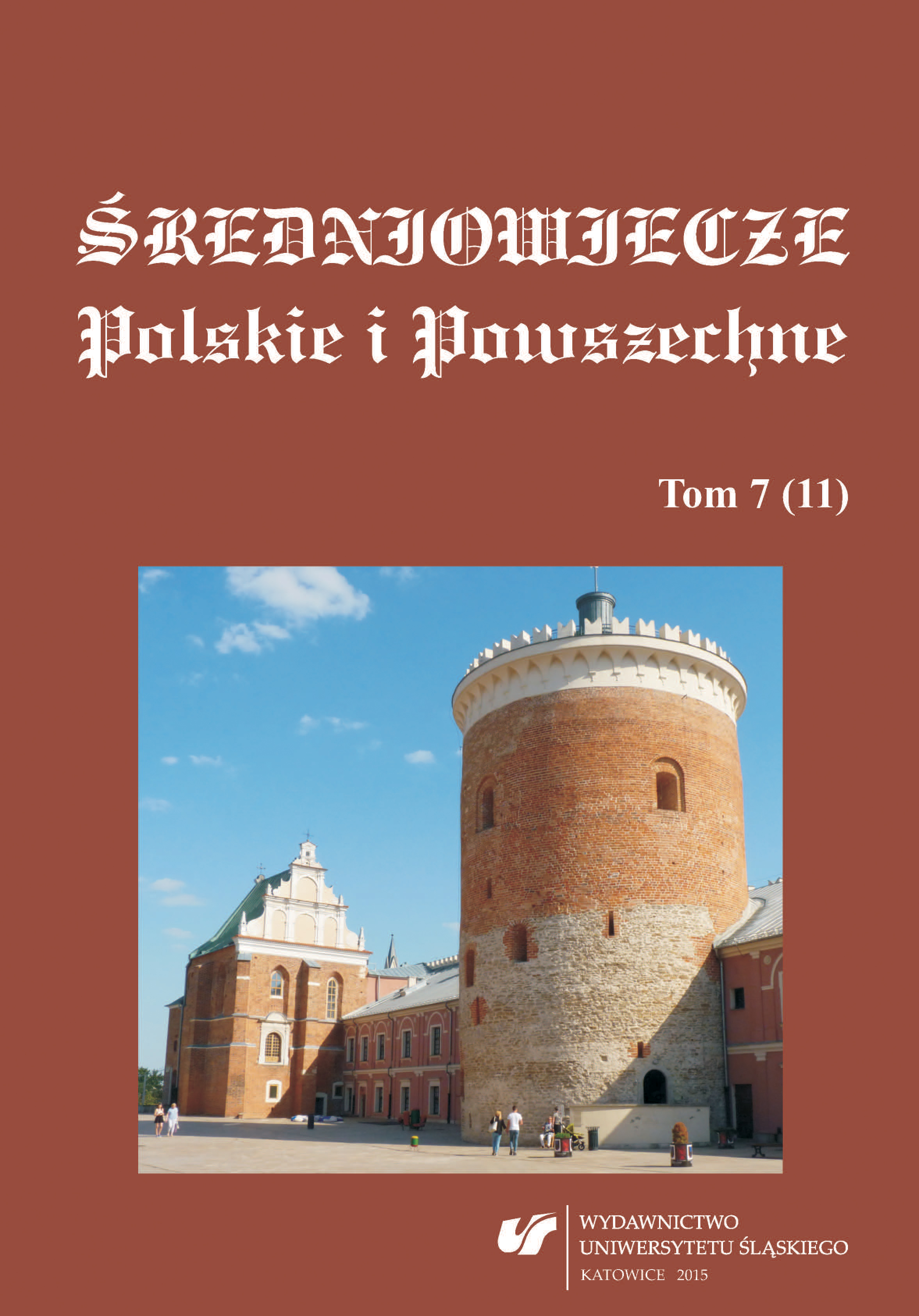Polityczny program ideowy tumby Władysława Jagiełły a czas jej powstania
Political ideological programme of Władysław Jagiełło’s tomb and the time of its execution
Author(s): Marek A. JanickiSubject(s): History, Middle Ages
Published by: Wydawnictwo Uniwersytetu Śląskiego
Summary/Abstract: The article is a continuation of the analysis of written sources concerning Władysław Jagiełło’s tomb and some of its formal features indicating that the execution of the tomb most likely took place after 1421, and essentially before 1430, whereas it is possible that certain parts were completed already after the king’s funeral in 1434 due to the fact that the tomb (as cenotaph) was placed above his underfloor grave in the Krakow Cathedral (cf. footnote 1). The first part of this text deals with the king’s choice of the burial site in the cathedral and likely political circumstances of the heraldic and figural programme formulation on the sides of the tomb, especially in the period when Jagiełło, as the contractual and elected king of Poland and hereditary Supreme Duke of Lithuania, made attempts to secure the succession for one of his sons. The second part includes the analysis of the programme, primarily in the context of the royal sigillography, with particular attention paid to: adjusting the layout of the most significant coats of arms on the tomb to suit the location of the tomb with relation to the tomb of Saint Stanislaus, duplicating the emblems of Poland and Lithuania and exposing the coats of arms that prove the king’s achievements as regards territorial recoveries. Separate comments focus on the accompanying land coats of arms as supporters, on the representations of the court and nobility elite, especially the clergy preceding lay noblemen (archbishop — the Gniezno metropolitan bishop and most probably the Krakow bishop), distinguished as the crucial king’s counsellors when the sovereign was alive as well as guardians of the Polish Kingdom during the interregnum. The heraldic and figural decoration of the tomb is a reflection of the systemic and territorial concept of the Polish Kingdom, with which the Grand Duchy of Lithuania was united during the reign of Władysław Jagiełło (who ruled supported by his counsellors).
Journal: Średniowiecze Polskie i Powszechne
- Issue Year: 2015
- Issue No: 11
- Page Range: 95-159
- Page Count: 65
- Language: Polish

